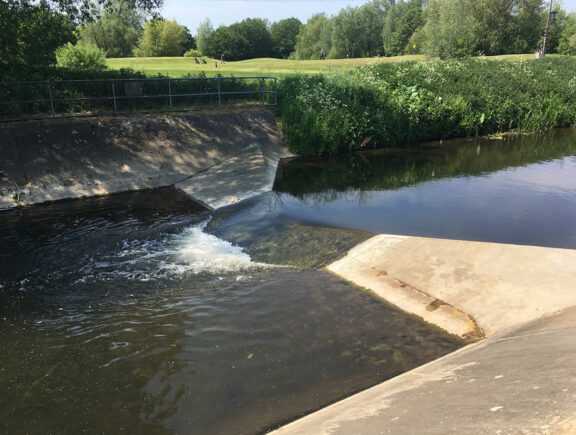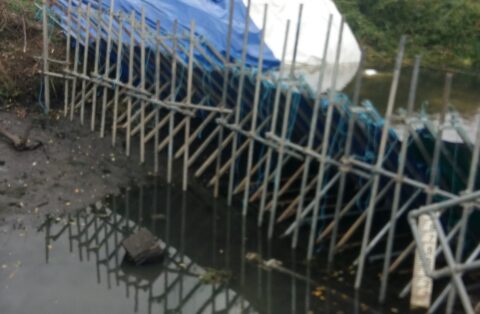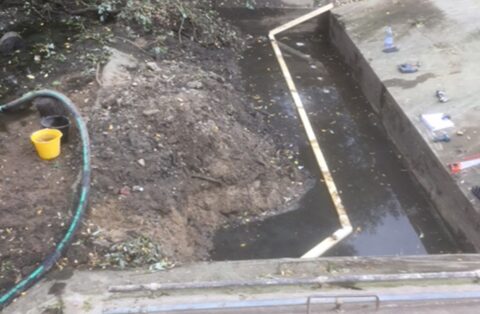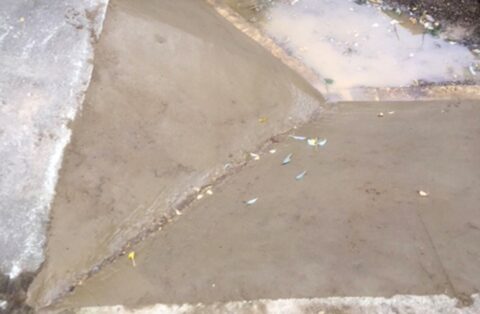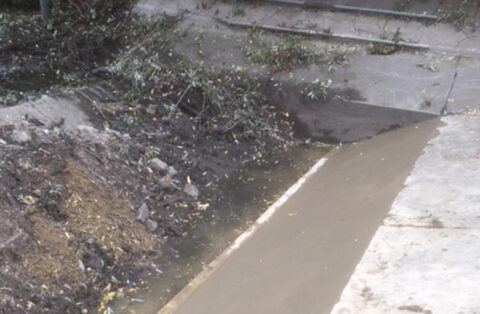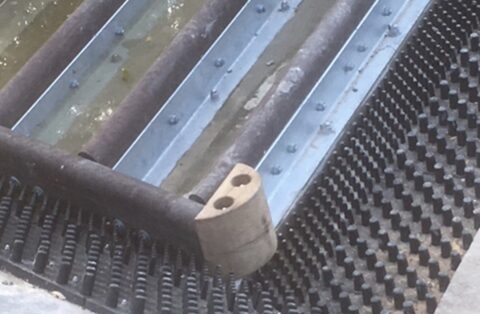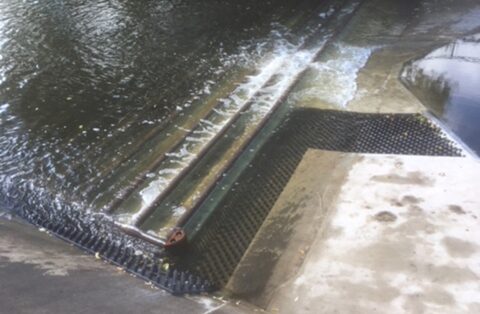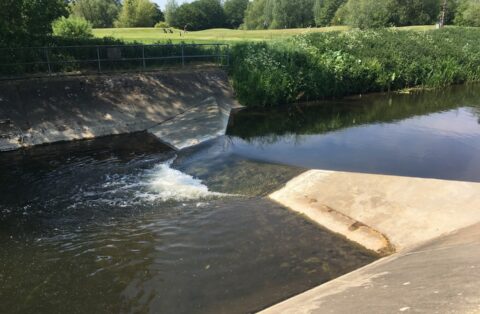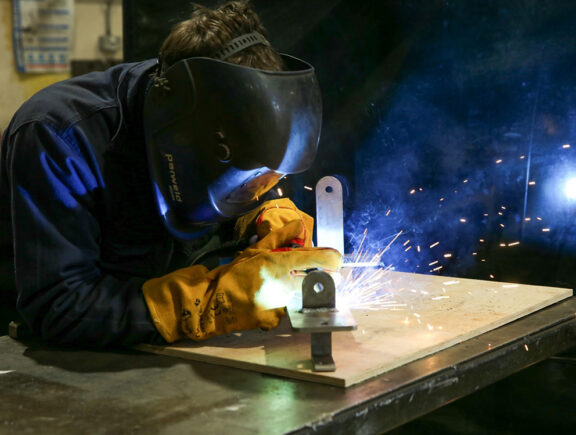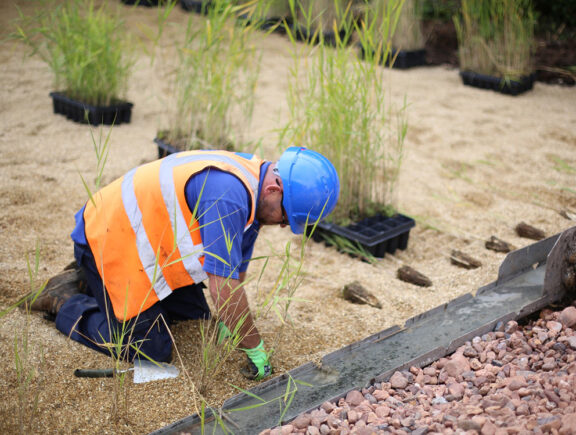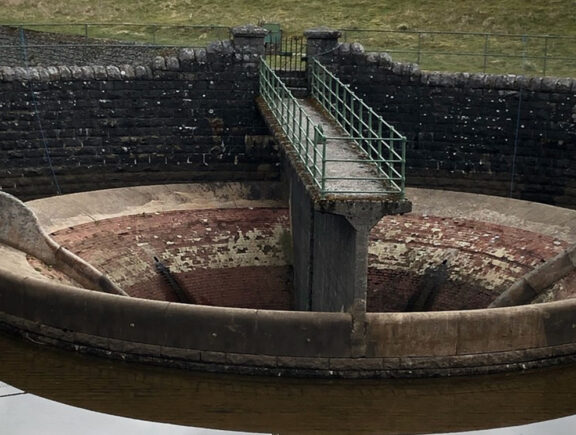Up-and-Over (Pumped) Eel Passes
Up-and-Over passes consist of a channel, usually constructed from steel, containing a substrate (typically bristles or polymer studs) that divert eels and elver around or over the barrier so that they can continue to follow their migratory routes to and from spawning grounds. Because they consist of a separate channel away from the flow of water, they require a pump mechanism — including renewable RAM-pump technology where there is a sufficient head — to trickle a flow of water along the upward and downward slopes. Polymer tiles are often preferred because they have different-sized studs to accommodate both eels and elver, they are easy to install and maintain, and are long lasting.
Gravity-fed Eel Passes
Gravity-fed eel passes require placement within the river for water to flow through them. They are often attached to the sides of weirs or other structures. The channels are often covered and lined with a bristle or polymer substrate. Sometimes, a studded tile substrate is fixed directly to the structure, such as the concrete of a weir, partly exposed. This low-cost option allows larger eels to move upstream through the faster flowing water and elvers to climb above the level of the water. They also aid salmonid and coarse fish to migrate up and down stream.
Fish Baffles (LCB, Low-Cost-Baffle)
Fish baffles are used to slow the water and provide sufficient depth to enable fish to migrate upstream. They are installed on a sloped surface, allowing water to build up behind each baffle. Fish use the pooled areas as safe spots to rest as they move upstream. The baffles Stonbury install are made from environmentally friendly recycled plastic that are easy to install and maintain. Eel tiles can also be integrated into the design with the baffles allowing for fish and eels to easily move upstream.
Technical Fish Passes
Technical fish passes such as Denil fishways or Larinier style passes use a series of baffles made from either metal, wood, or plastic, attached to the base and sides of a constructed channel to create highly specific flow conditions. These passes, depending on the design, can speed up or slow areas of flow and create stilling areas to create ‘ladders’ through which fish can climb.
Rope Passes
Spatt ropes, normally used for growing shellfish, allow small eels and elvers to pass small weirs. These are normally fixed using clamps and loosely pined to the wall, where eel tiles would be too big. This is a great way of allowing the eels to move upstream whilst keeping the costs low. Designed for an aquatic environment, rope passes are easy to maintain and install.
